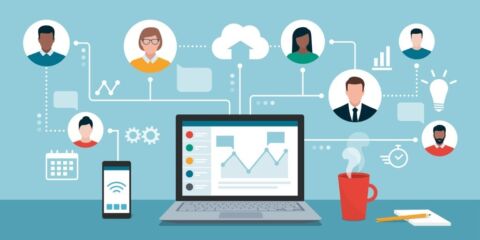Properly managing your cloud environment is among the most important tasks any organization has. Since there are so many ways data can get out of hand, it’s not surprising that there is a vast range of situations where you may yourself in need of more than Microsoft 365’s built-in governance controls. Today I’ll run down nine different use cases that you should look out for and how AvePoint’s cloud management solutions can help.


Case 1: Learning the Landscape of Your Microsoft 365 Workload
Getting accurate reports is vital to understanding the size and purpose of an organization’s workspaces. Many companies don’t have access to this information about their data lifecycle, and being without it may impact revenue or even impact the cost of IT.
GET OUR NEWSLETTER: Subscribe here for weekly content from AvePoint
Once you do have an adequate reporting solution and know where your data is at all times, however, you can easily look over your Office 365 digital landscape using the tools provided (e.g. the handy dashboard Cloud Governance offers). Maybe one section of your cloud environment is lacking ownership, or another is lacking storage space, or another is low on activity. This is the value we can provide from a reporting perspective.

Case 2: Troubles with Sprawl
Sprawl can be an issue for a company of any size, but it becomes especially strenuous when it’s a larger organization with an active user base. Too many workspaces get created unnecessarily, including duplicate workspaces (such as Teams) that are made without knowing another version exists. When names and classifications aren’t being paid attention to, it can be easy for pre-existing Teams to be overlooked.
AvePoint Cloud Governance helps by keeping workspaces more organized with both proper naming conventions and by tying name logic to business process flows.
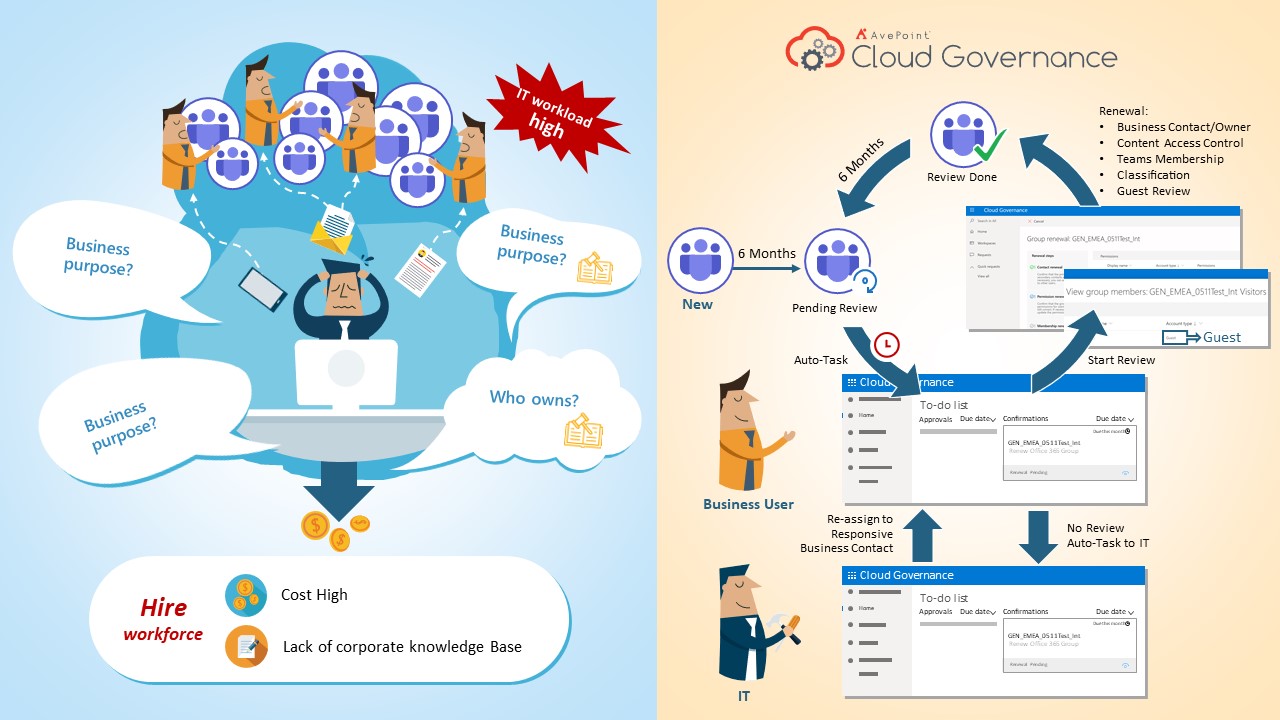
Case 3: Troubles with Sprawl, Pt. 2
Let’s say you’re running Microsoft 365 with plenty of workspaces being created—too many, in fact. Some organizations have an issue with sprawl but don’t think that they do. I’ve worked with organizations that have 10,000 users and 12,000 Teams, and it’s clear to outsiders that they have a problem, but it’s harder to notice in the moment.
When they do run into an issue (such as internal auditing) and have to answer to questions such as “Why do you have those workspaces? What information is stored there? What’s the purpose of that? How long has that information been a thing?” IT may be at a loss. And if a security breach happens, you’ll be struggling to answer your security officer about how long the data has been there and how many people have been accessing it. Also, keep in mind that Microsoft only provides up to 90 days of auditing if you have less than an E3 license in your tenant.
That type of situation will cost an organization not just from a security perspective, but also from a storage perspective. The key to avoiding these headaches is to have a proper workspace lifecycle. Instead of keeping data idly in an environment, the ideal would be to have a retention plan in place that automatically deletes data that’s no longer needed. You should also have a control so that the lifecycle can be managed automatically.
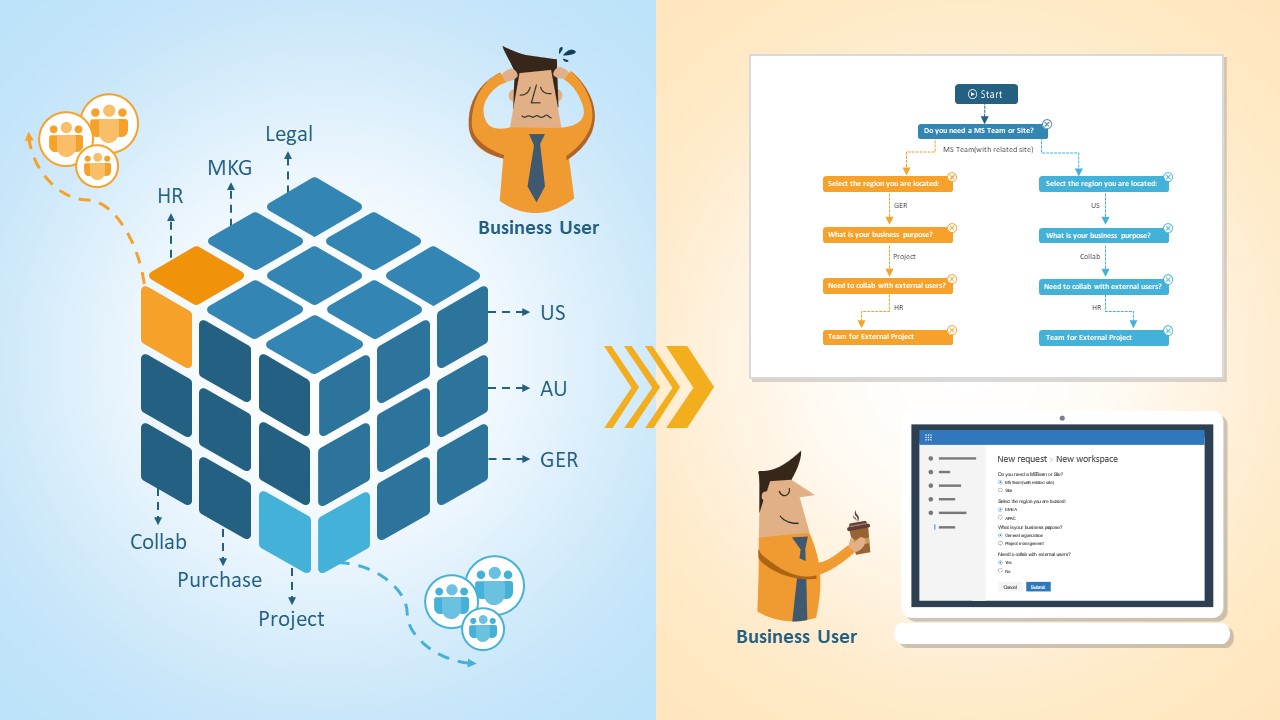
Case 4: Workspace Searchability
When you have a company with a complex structure, you want to be sure you can identify all of your workspaces. This isn’t just to make it easy for you to understand the purpose of those workspaces, but also because it’s important that if a new business user comes in, they can understand how to request new workspaces and how to find them. Having the proper classification lined up is essential for searchability.
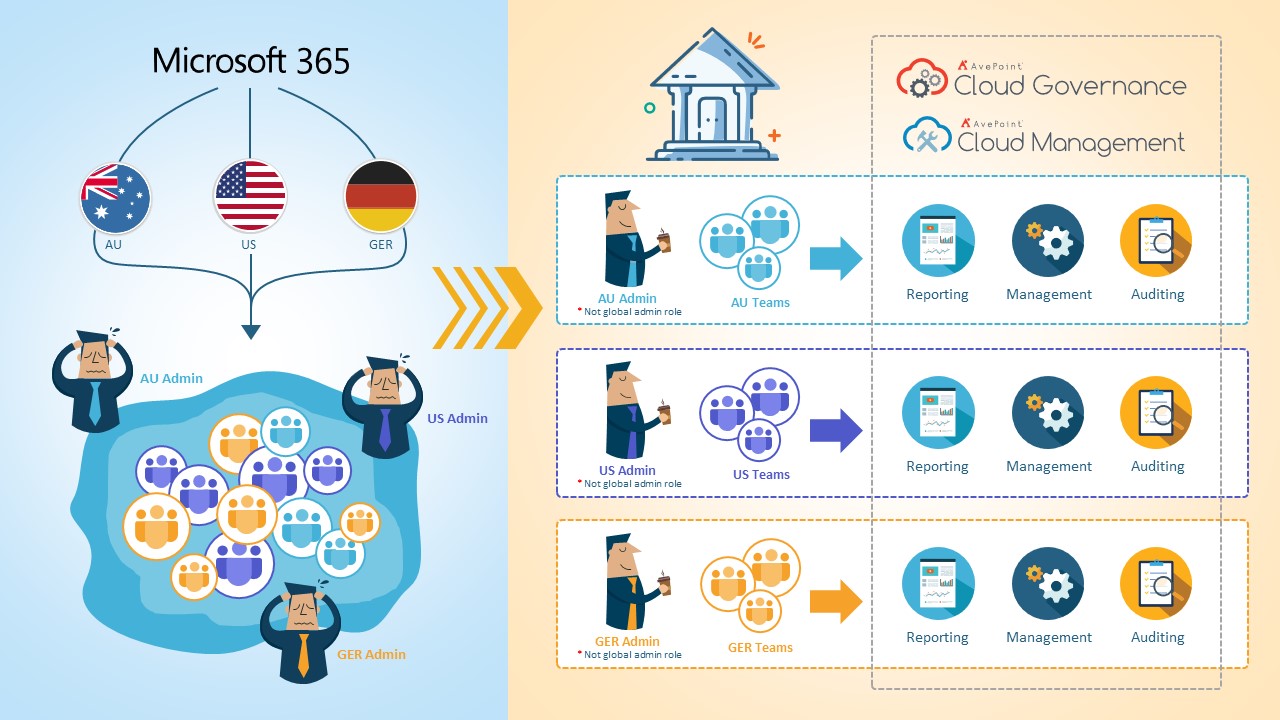
Case 5: Multi-Tenant Management/Virtual Tenant Management
Let’s say you have three tenants in Microsoft 365: one in Germany, one in the US, and one in China. In order to get a report on how the user license looks and how Microsoft Teams are being created for those three tenants, you have to go to the individual tenants and check each—a very time-consuming process. Being able to consolidate the metrics of all those tenants within one central dashboard/interface and do your management from there would be incredibly helpful.
Then there’s the virtual tenant. Let’s say you work for an international organization that has one Microsoft 365 tenant for the US, Australia, and Germany. All of your Teams and SharePoint sites are under this tenant. But if your boss wanted to know how many Teams and SharePoint sites are being created specifically in the US, you wouldn’t be able to answer that. If you already created those workspaces with the proper classification and grouping practices, however, your management console would tell you exactly how things break down by region. This is one of the benefits AvePoint can provide.

Case 6: Internal Solution Scaling
Governance expands far beyond provisioning. Let’s say you have an in-house provisioning solution already built, but then a new feature is introduced to Microsoft 365. If you want your users to benefit from your investment into the platform, you’ll want to keep your solution up to date. But how will your solution be able to scale? It might work at the moment if you’re still in the adoption phase, but what if you have a 100% adoption rate? Can your solution be scaled that high? How can you maintain a high SLA? What if your electricity goes out? Even if you try to have a high-quality load balance setup across different data centers, the cost for hosting such an environment would be really expensive.
If you use Cloud Governance, you don’t have to worry about new updates from Microsoft or scale increases. We’ve been providing SaaS solutions for Microsoft services for nearly six years. With that experience combined with the ISO certification we have, we should be a better alternative than most in-house solutions (especially in terms of cost).
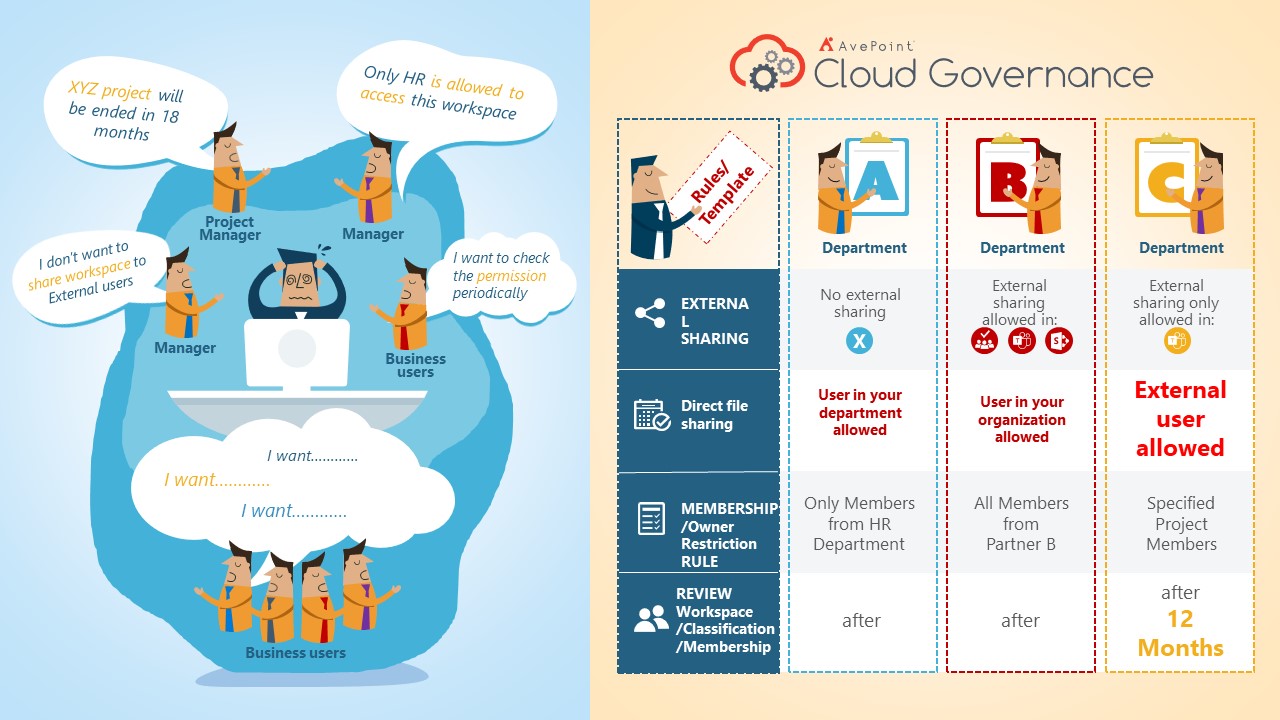
Case 7: Workspace Security
When we talk about governance, people usually think about the data lifecycle. But what about security? Along with how long your workspace is live, who can access those workspaces? Is it everyone? Guest users? Active users? Or could it even be someone who isn’t part of the team, but was randomly shared the link?
If these security questions aren’t being answered in an upfront, transparent, proactive manner, then you’re in a pretty vulnerable situation.
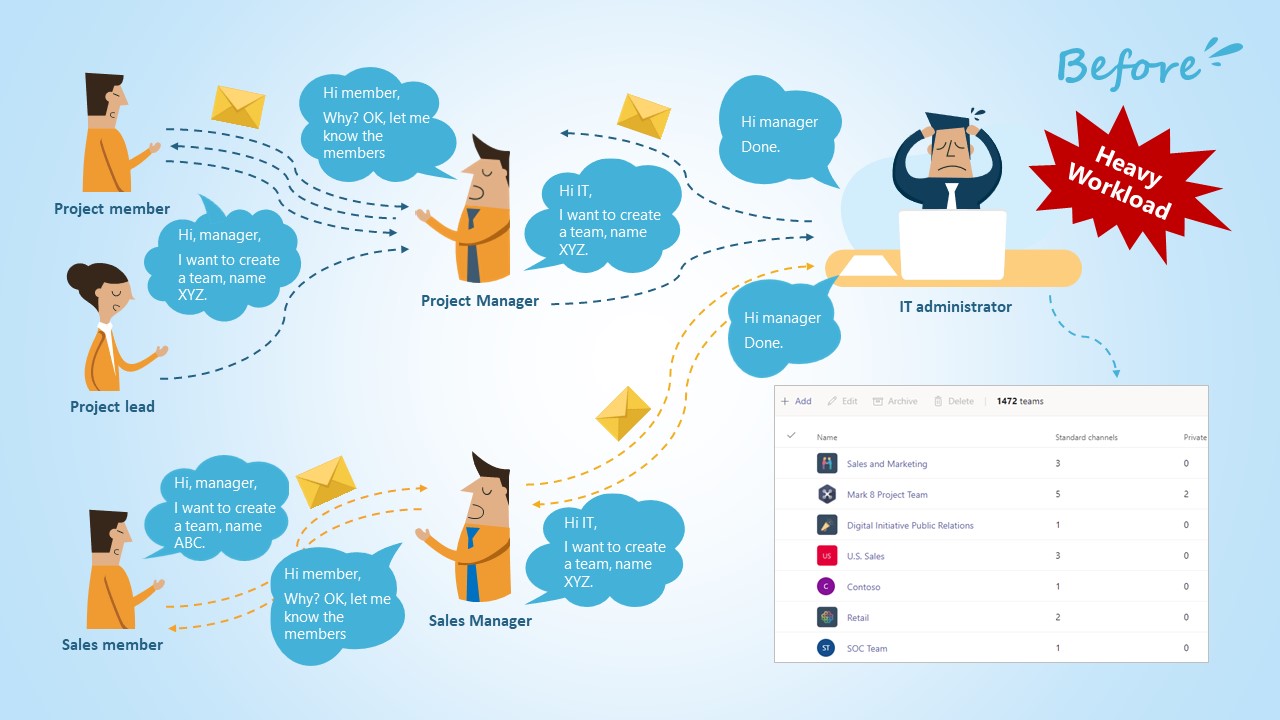
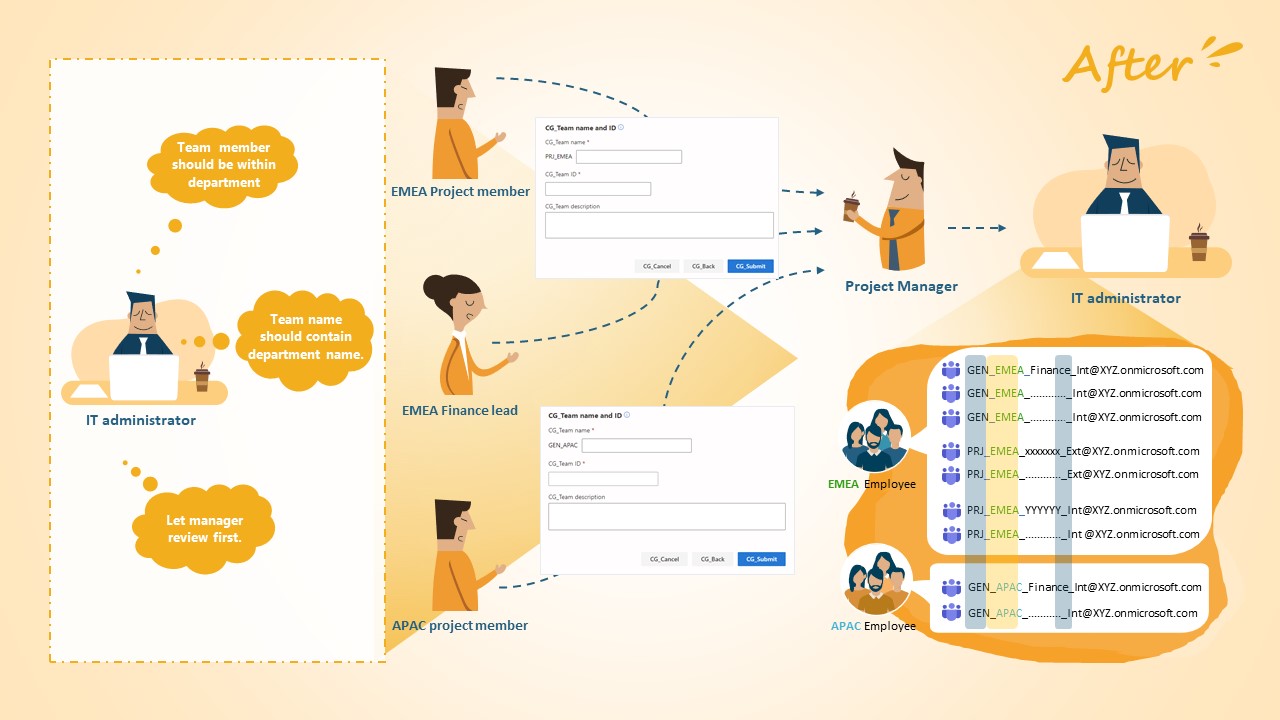
Case 8: Freeing Up IT
If you don’t have a third-party governance solution, you as an IT admin or operator are likely handling the workspace requirements by yourself. These requirements include but are not limited to:
- Creating new workspaces
- Changing workspaces
- Changing the name
- Adding members
- Removing members
- Checking adhoc settings
- Removing adhoc settings
- And more
In many cases, people are doing these tasks manually. And many times, they’re doing this as a script and adjust it in the backend.
If there’s a solution to help them, however, their job will no longer be to handle people’s individual creations anymore. Those are very much for day-to-day work, but not as relevant to critical business projects. Your IT admin will be able to focus on more key things such as which members should be there, which shouldn’t be there, how you can submit a report to the landscape, how you can accomplish important IT projects such as moving critical processes to a SAP system or moving legacy content to Microsoft 365, and so on. You can get rid of two years of day-to-day work by streamlining their management responsibilities.
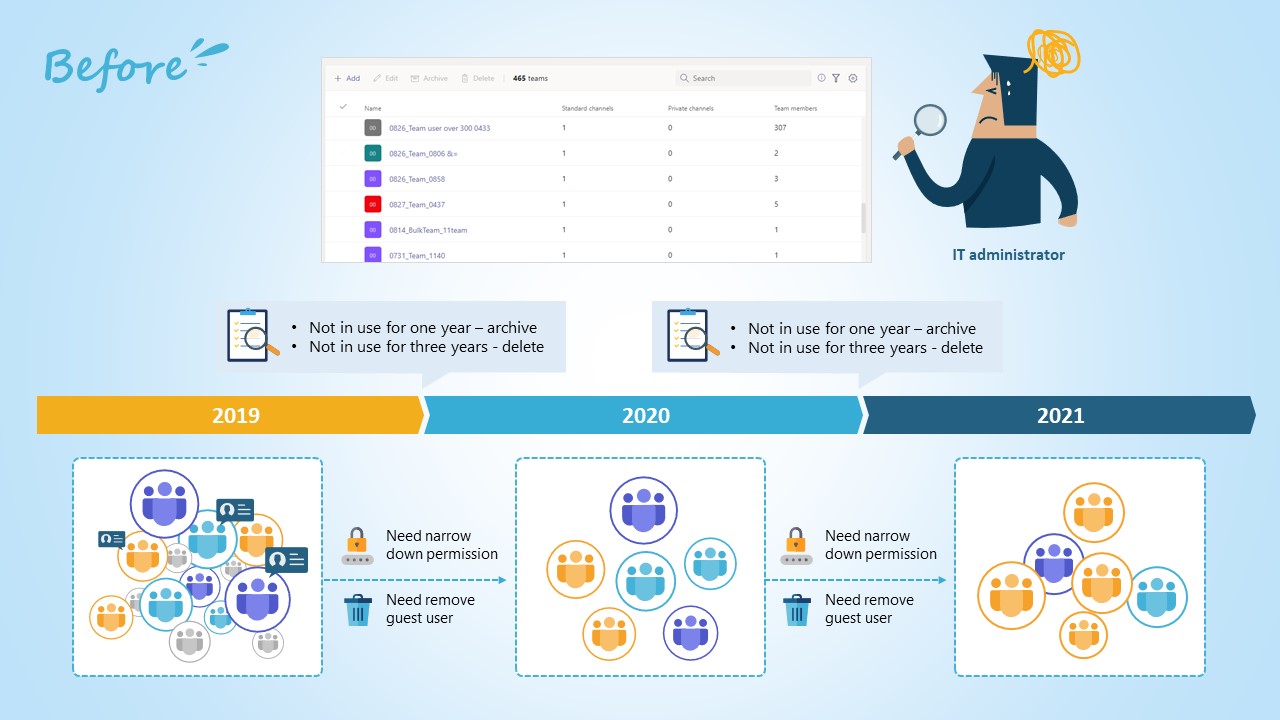

Case 9: Lifecycle Maintenance
Look at how AvePoint is doing ISO. When it comes to that, there’s a question of how to maintain the lifecycle of your workspaces. How many of those workspaces have been used over the past several years? It usually depends on the industry. Banks typically keep data for 7-10 years. Knowing when the data will be deleted, archived, and backed up will allow people to do a restore. And you want to be able to categorize these workspaces according to the activities they have and according to the lifecycle stage they’re at. It’s important to understand how many workspaces will be deleted in the coming months.
Microsoft doesn’t provide this information natively, so a solution can do wonders if you want to be able to categorize things like this.
Summary
In terms of governance, AvePoint’s value essentially comes from being able to maximize your IT investment, reduce your IT labor cost, and let IT focus on the important tasks in your organization. We’re helping automate your business processes including the most complex processes like lifecycle management, security management, and change management processes for workspaces. Automation is crucial in these cases, and it’s a way you can reduce human error and maintain a scaled Office 365 environment to match the pace your business is growing and performing.
Lastly, we’re providing you insights from a business ownership perspective as well as a security lifecycle perspective, and that insight is available any time you want. It’s easy to maintain and can reflect your business needs in real-time.

